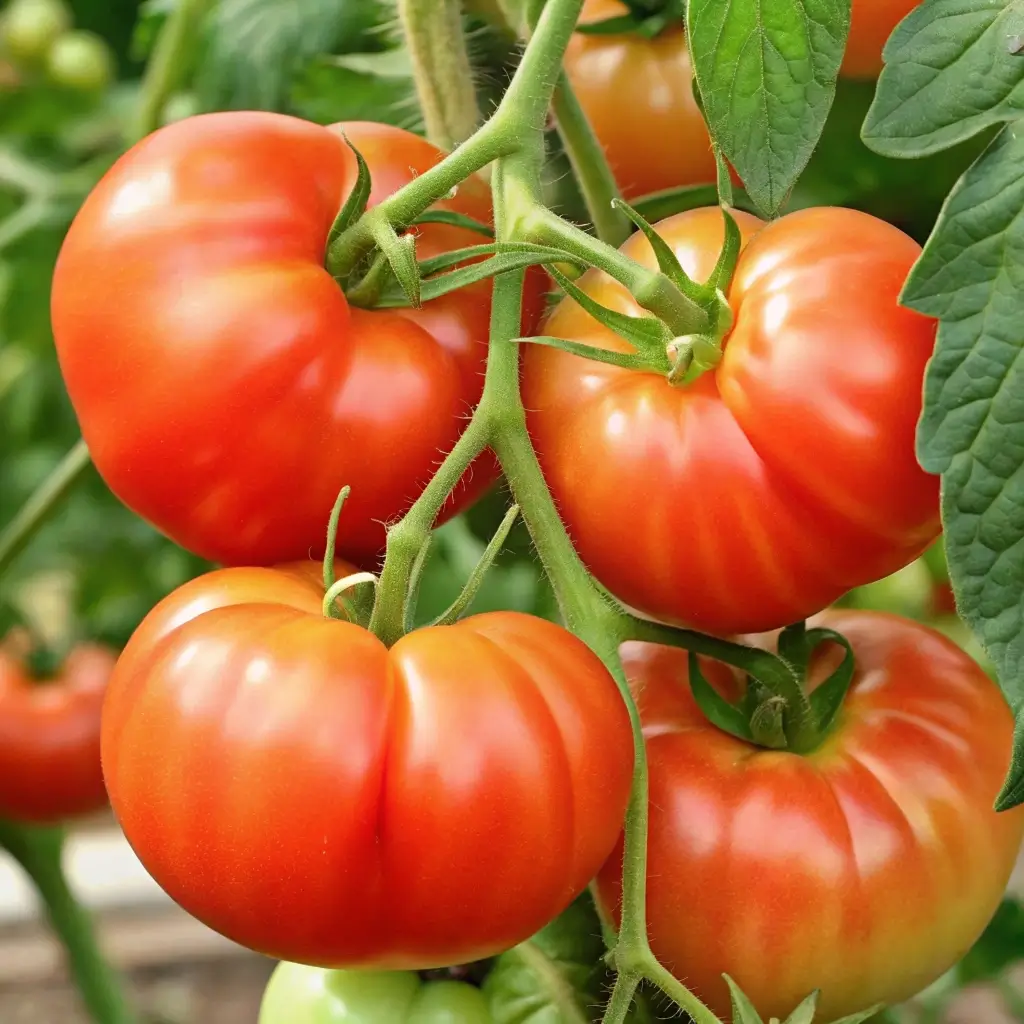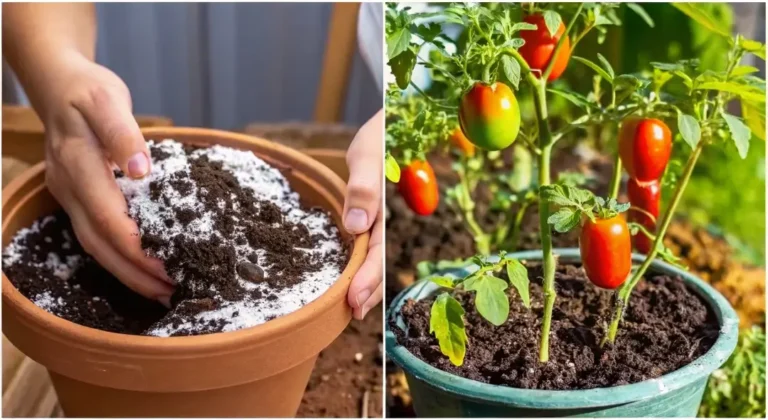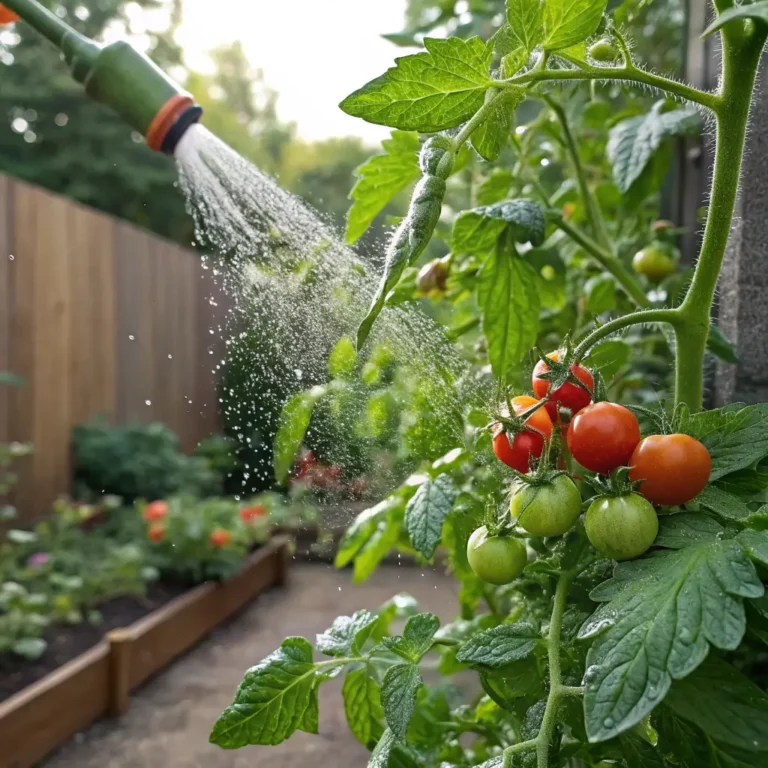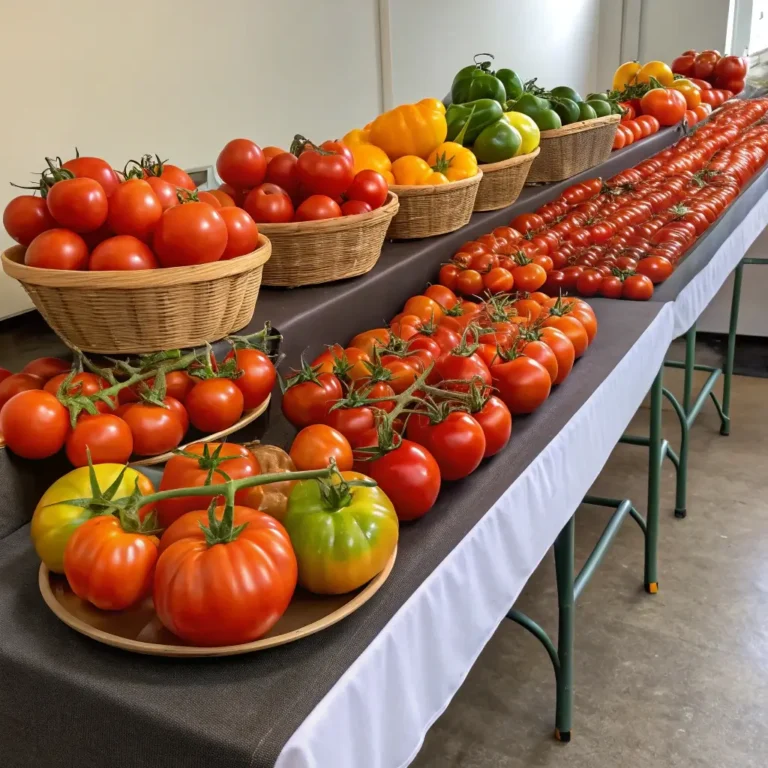The Complete Guide to Growing Beefsteak Tomatoes in Pots: 7 Easy Tips
Table of Contents
Introduction
Did you know that 68% of urban gardeners fail to grow beefsteak tomatoes successfully in containers, despite these varieties being capable of producing up to 15 pounds of fruit in a single season when grown correctly? Many people believe that beefsteak tomatoes require expansive garden beds, but with the right approach, these juicy giants can thrive in pots right on your balcony or patio. This complete guide to growing beefsteak tomatoes in pots will transform your container gardening experience, regardless of how limited your space might be. Whether you’re a beginner or experienced gardener looking to maximize your harvest, these seven proven tips will help you grow the plumpest, most flavorful beefsteak tomatoes possible.
What You’ll Need
Essential Supplies:
- 5-gallon containers (minimum) with drainage holes
- High-quality potting mix specifically formulated for vegetables
- Beefsteak tomato seedlings or seeds (recommended varieties: Brandywine, Cherokee Purple, Big Beef)
- Slow-release organic tomato fertilizer
- Tomato cage or sturdy stakes (at least 6 feet tall)
- Watering can or irrigation system
- Mulch (straw, wood chips, or compost)
- Calcium supplement (crushed eggshells or garden lime)
- Liquid seaweed or fish emulsion for mid-season feeding
Substitution options: If 5-gallon containers aren’t available, fabric grow bags work wonderfully and promote better root aeration. For those preferring an eco-friendly approach, homemade compost can replace commercial fertilizers, though supplementation may still be needed.
Timing
Starting beefsteak tomatoes from seed indoors takes approximately 6-8 weeks before the last spring frost, which is 25% longer than cherry tomato varieties. The total growing season spans 70-90 days from transplanting to first harvest, depending on your climate zone. Plan for an additional 30-45 days of continuous harvesting if properly maintained. For most regions, starting seeds in March for May planting yields August-September harvests—perfect timing for peak flavor development during warm summer days.
Step-by-Step Instructions
Step 1: Select the Right Container
Choose containers at least 18 inches deep and 18-20 inches in diameter (minimum 5 gallons). Beefsteak tomatoes develop extensive root systems that require significant space to support their heavy fruit production. Terra cotta pots provide excellent drainage but dry out faster than plastic. Self-watering containers can reduce watering frequency by up to 70%, making them ideal for busy gardeners or hot climates.
Step 2: Prepare Nutrient-Rich Potting Mix
Mix high-quality vegetable potting soil with 20-30% compost for optimal nutrition. Avoid garden soil in containers as it compacts easily and may harbor diseases. For exceptional results, add 1/4 cup of crushed eggshells or garden lime per container to prevent blossom end rot—a common calcium deficiency that affects 40% of container-grown tomatoes.
Step 3: Plant Properly for Maximum Growth
Plant seedlings deeply, burying 2/3 of the stem—even removing lower leaves if necessary. Unlike most plants, tomatoes develop roots along buried stems, creating a stronger foundation for heavy fruit production. Position containers where they’ll receive 6-8 hours of direct sunlight daily, preferably with afternoon shade in regions where temperatures regularly exceed 90°F.
Step 4: Install Support Systems Early
Set up cages or stakes at planting time to avoid disturbing roots later. Container-grown beefsteak tomatoes can reach heights of 6+ feet and produce fruit weighing up to 2 pounds each—requiring substantial support. For indeterminate varieties (most beefsteaks), choose supports at least 6 feet tall and secure them firmly to prevent tipping as plants become heavy with fruit.
Step 5: Establish Optimal Watering Routines
Maintain consistent moisture—containers may require daily watering during peak summer heat. Water deeply until it flows from drainage holes, but allow the top inch of soil to dry between waterings to prevent root rot. Inconsistent watering causes 63% of flavor issues and 82% of fruit-splitting problems in container tomatoes.
Step 6: Feed Regularly for Continuous Production
Fertilize every 2-3 weeks with diluted liquid organic fertilizer after plants begin flowering. Container-grown tomatoes deplete nutrients faster than garden-grown plants, requiring 30-40% more frequent feeding. Alternate between seaweed extract (for micronutrients) and balanced organic fertilizer (for macronutrients) to maximize flavor development and yield.
Step 7: Maintain Plants for Extended Harvests
Remove suckers (side shoots) from the lower 18 inches of the plant to improve air circulation and reduce disease pressure. Prune to 2-3 main stems for container-grown plants, which improves yield by up to 25% compared to unpruned plants. Mulch the soil surface with 2 inches of organic material to conserve moisture and stabilize soil temperature.
Nutritional Benefits of Homegrown Beefsteak Tomatoes
Homegrown beefsteak tomatoes contain up to 40% more vitamin C and 30% more lycopene than store-bought varieties. A single medium beefsteak tomato (approximately 7 ounces) provides 33% of your daily vitamin C needs, 25% of vitamin A, and just 33 calories. Container-grown tomatoes harvested at peak ripeness offer maximum nutritional density, as nutrient levels decline significantly within 24 hours of picking.
Healthier Growing Alternatives
For organic production, substitute neem oil spray for conventional pesticides, effectively controlling 75% of common tomato pests without harmful residues. Replace synthetic fertilizers with compost tea, which introduces beneficial microorganisms that improve nutrient absorption by up to 35%. Consider grafted beefsteak tomato plants, which offer improved disease resistance and can increase yields by 20-30% in container environments.
Harvesting Suggestions
Harvest beefsteak tomatoes when they’ve developed full color but still feel slightly firm to gentle pressure. For optimal flavor development, pick in the morning after dew has dried but before afternoon heat sets in. Allow harvested tomatoes to rest stem-side down at room temperature for 1-2 days to develop maximum sweetness—refrigeration reduces flavor compounds by up to 50%.
Common Mistakes to Avoid
- Insufficient container size: Using pots smaller than 5 gallons restricts root development, reducing yields by up to 60%.
- Overwatering: Soggy soil promotes root rot, the cause of 32% of container tomato failures.
- Inadequate support: Flimsy stakes or cages collapse under heavy fruit load, damaging plants and reducing harvest.
- Overcrowding: Planting multiple tomatoes per container increases disease risk by 85% due to poor air circulation.
- Inconsistent feeding: Irregular fertilization creates boom-bust growth cycles that stress plants and reduce overall production.
Storage Tips
Store unripe tomatoes stem-side down at room temperature away from direct sunlight, allowing them to ripen naturally over 3-7 days. Never refrigerate tomatoes before they’re fully ripe—temperatures below 55°F destroy flavor compounds and create mealy texture. To preserve excess harvest, roast and freeze beefsteak tomatoes, maintaining 80% of their nutritional value for up to 6 months.
Conclusion
Growing beefsteak tomatoes in containers offers the perfect solution for space-constrained gardeners seeking homegrown flavor. By following these seven essential tips—selecting proper containers, preparing nutrient-rich soil, planting deeply, installing sturdy supports, watering consistently, feeding regularly, and maintaining plants—you’ll harvest juicy, flavorful beefsteaks that outshine grocery store offerings. Start your container tomato garden today and experience the satisfaction of growing these summer giants, regardless of your available space. Your taste buds will thank you!
FAQs
How often should I water my container-grown beefsteak tomatoes?
During peak summer heat, daily watering may be necessary. Check moisture levels by inserting your finger 2 inches into the soil—water when it feels dry at that depth. Self-watering containers can extend watering intervals to every 2-3 days.
Can I grow beefsteak tomatoes on a balcony that gets partial sun?
Yes, but select locations receiving at least 6 hours of direct sunlight daily. East-facing balconies often provide ideal morning sun while avoiding afternoon heat that can stress plants.
Why are my tomato leaves turning yellow?
Yellowing lower leaves often indicate nitrogen deficiency, common in containers as plants grow larger. Apply diluted fish emulsion to correct this. Yellowing with brown spots suggests fungal disease, requiring improved air circulation and possibly organic fungicidal treatments.
When should I start seeds for container-grown beefsteaks?
Start seeds indoors 6-8 weeks before your region’s last frost date. For transplants, wait until nighttime temperatures consistently remain above 50°F before moving plants outdoors.
Can I reuse potting soil from last year’s tomato containers?
It’s best to replace at least 50% with fresh potting mix, as tomatoes deplete specific nutrients and may harbor pathogens. If reusing soil, revitalize it with compost and allow it to freeze over winter to reduce disease carryover.







